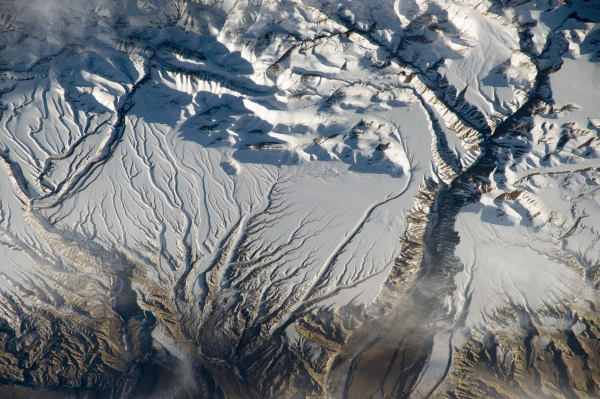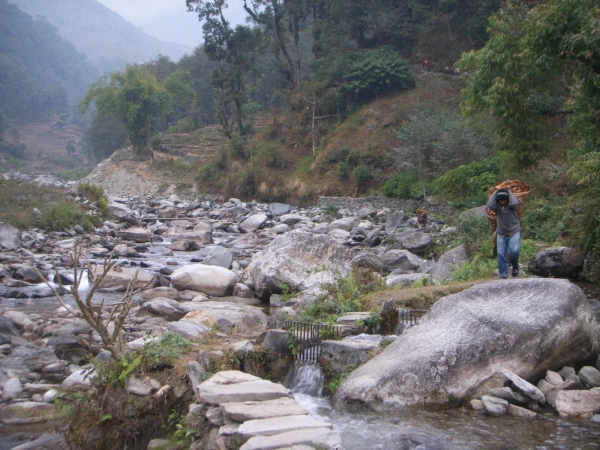Saving the vanishing Himalayan spring waters

Photo: The Earth Observatory, NASA
Over the course of a decade, half the spring water in the Indian state of Sikkim disappeared. Nestled in the eastern Himalayas, the villages of Sikkim saw their wells run dry, pastures parched, and families travel farther and farther from home to draw fresh water. Sikkim is just one of many Himalayan regions, affected by the increasingly common phenomenon of disappearing spring water. No-one is sure why this is happening. Climate change may be having an influence, along with other factors. What is clear, however is that, over recent years, less and less spring water makes it down the Himalayan ridges and valleys to the remote villages that depend on it the most.
While Himalayan glaciers and rivers are comparatively well-researched, our knowledge of the Himalayan springs is surprisingly lacking. In a new working paper, Methods to Investigate the Hydrology of the Himalayan Springs researchers at the International Water Management (IWMI) are urging scientists to take up the challenge. Despite their role as a major—and sometimes the only—source of freshwater for the many mountain villages that dot the 2,400 km, five-country expanse of the Himalayas, our knowledge of spring hydrology seems as elusive as the vanishing waters themselves.

Photo: Vladimir Smakhtin / IWMI
“We know some of the factors that impact flows,” says IWMI’s Pennan Chinnasamy, one of the paper’s co-authors. “These include population growth, increased groundwater pumping, soil erosion, changing rainfall patters, climate change, deforestation, and infrastructure development. However, still too little is understood about Himalayan springs and more and better site-specific research is needed. Better understanding will help policy-makers improve spring water access in regions vulnerable to climate change induced water scarcity. Particularly important is quality baseline data to compare and evaluate the success of development projects.”
Specifically, looking into the chemistry of spring water may be key to understanding the Himalayan hydrology. One method proposed in the paper is isotope analysis. As shown in research from China, Spain, and India, isotopic methods are powerful tools in hydrological research. The hydrogen and oxygen isotopes in a water molecule are unique markers that make them ideal for identifying water sources and pathways. Isotope analysis has the potential to help researchers locate spring water recharge areas and identify human impacts on springs.
The paper recommends a combined method of field-based empirical studies and desk-based analytical research to gain a more in-depth understanding of spring hydrology in the Himalayas. Field investigations—including isotope analyses—will provide insights into the geology, hydrology, climate and land use patterns in specific areas. Desk top analyses – including the development of hydro-geological maps and hydrological models – will help researchers and planners better understand the movement of Himalayan ground and spring water. Ultimately, conceptual models, and field observations should be combined to develop better simulation models. This will aid researchers and policy makers to better understand the impacts of future developments, population growth and climate change on spring hydrology.
To help revive their waters, the Sikkim government produced the Dhara Vikas: manuals and maps of springs made from currently available data. Similar products are needed for other parts of the Himalayas, as nearly 8,000 villages still face water shortages due to vanishing springs, with poor rural regions in Nepal the most vulnerable. If we can fill the gaps in research and properly manage springs, say the paper’s authors, the problems of water scarcity in the mountainous regions of the Himalayas can be alleviated.
This work is supported by CGIAR Research Program on Water, Land and Ecosystems (WLE).

